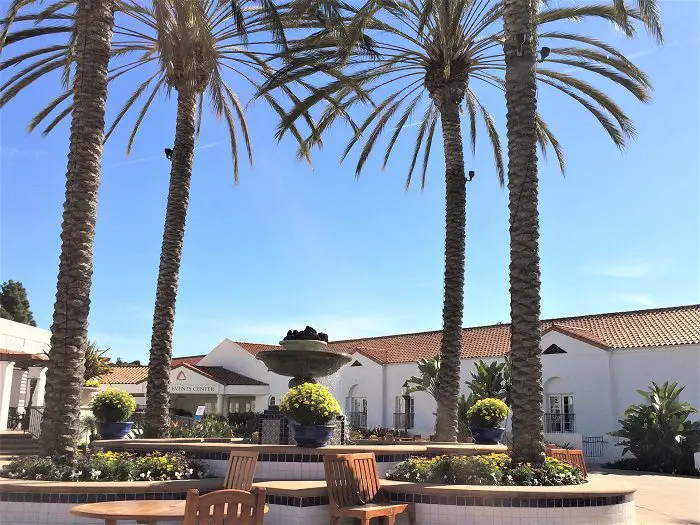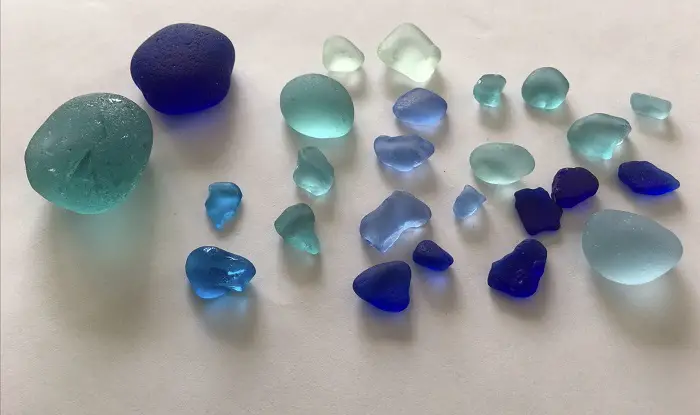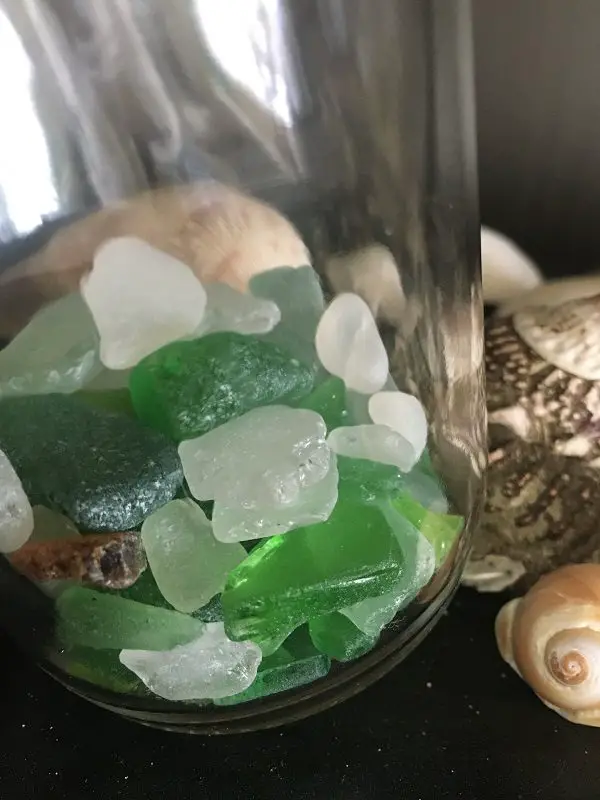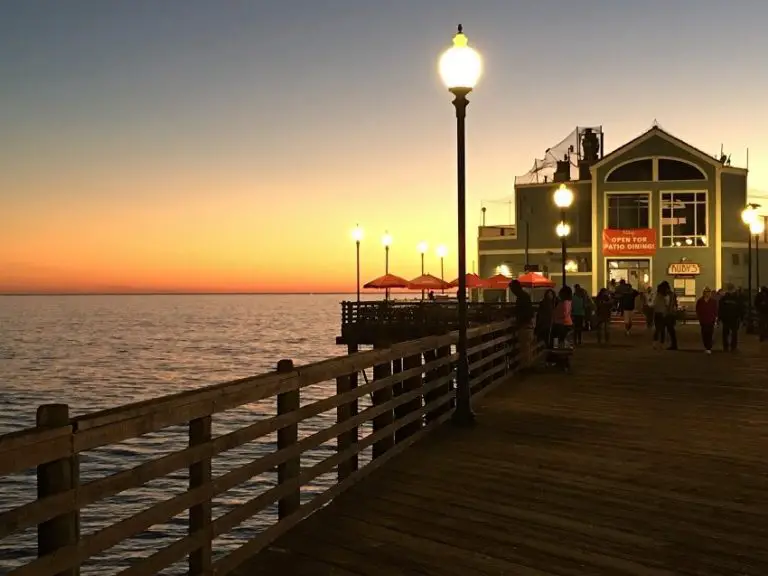7 Iconic Palm Trees in San Diego & How to Care for Them
Drive down almost any street in San Diego and you’ll see majestic palm trees of every kind blowing in the breeze or simply reminding you that you’re in paradise. From tall and willowy, to short and thick, the palm trees in San Diego are a reminder not to take life so seriously.
Table of Contents
Palm trees in San Diego that are native to California
With the multitudes of palm trees we have in San Diego, you’d think most of them have always lived here. But you’ll be surprised to know that we only have one measly palm tree to our name here in California.
I’m just as shocked as you are, but I’m truly thankful that what we’ve got growing in our midst truly enjoys our climate here in paradise. Without the surround sound of palm trees, life wouldn’t be the same here in San Diego, wouldn’t you agree?
The California Fan Palm — California’s only native palm tree
Though the California Fan Palm is the only California native palm tree, you won’t likely spot many around San Diego. They’re happiest growing inland in desert areas clustered with others of their kind near small sources of water.
This palm tree is generally 30-40 feet tall with a canopy that’s between 5-10 feet at the top. They have yellow-green fan-like feathery leaves with nasty pointed spikes at the ends.
Surprisingly (to me, at least!) these palms can be grown in pots. So if you’d like the tropical look of this San Diego palm tree in your yard or on your patio, keeping this native palm in a nice large pot is a great option.
As a potted tree, the California Fan palm won’t grow as large which makes them a great choice for adding tropical charm to your outdoor spaces.
Though not as common to see “in the wild” near San Diego, you can purchase one from many of our top nurseries in San Diego.
Care of the California Fan Palm
- It tolerates partial shade but prefers full sun.
- Drought tolerant but does best with at least once per week deep watering.
- Loves heat but can withstand cold temperatures as low as 15 degrees F.
- Can easily be grown in a pot to keep it a smaller size.
- Feed a good general palm food/fertilizer about twice a year.
- These trees do require some maintenance with dropping “berries” from ornamental fruit after flowering in the summer, and trimming dead fronds from the trunk.
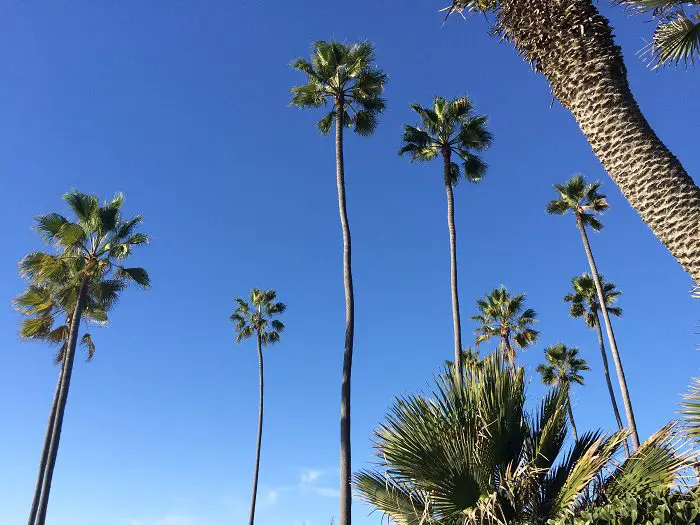
Non-Native Palm Trees in San Diego
San Diego is home to a multitude of palm trees that are not native to this region. Some have been brought from Mexico, others from South America and some from as far away as Asia and Australia.
The overwhelming majority of palm trees in San Diego are non-native cousins to our own California Fan Palm that have learned to thrive in our area.
Other popular palm trees in San Diego
-True Date Palm Tree
-Canary Island Palm Tree
-King Palm Tree
-Queen Palm Tree
-Pygmy Palm Tree
The Most Popular San Diego Palm Tree: The Mexican Fan Palm
The Mexican Fan Palm is a local favorite, and one of San Diego’s staple palm trees. They line our beach roads, streets, and neighborhoods with their tropical towering presence.
The most notable characteristic is its massive size. They’re easy to spot all throughout San Diego with heads popping up over our landscape at up to 100 foot heights! Because they’re so tall, they’re not a good fit for residential planting.
An especially impressive bonus for the Mexican Fan Palm is its extreme drought tolerance. You can often find clusters of these palms throughout canyons or lining freeways and out in the middle of nowhere … simply surviving on the tiny amount of annual rainfall we get here in San Diego.
They are NOT easy keepers in another sense, though. Like many palms of this variety, they can produce huge amounts of dead fronds which cling to the trunk and make for a really awful look.
To keep them safe from insects, disease, and rodents that like to burrow … it’s always best to provide regular maintenance by professional tree trimmers.
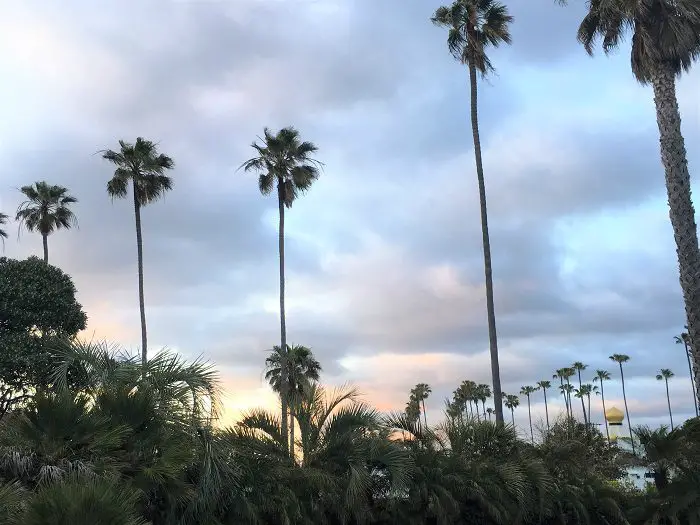
Mexican Fan Palm Care
- They grow massively tall, so they’re best left to wide open spaces.
- They’re happiest in full sun.
- They need almost no irrigation and can survive on what little rain we get.
- They’re heavy on maintenance needs for keeping dead fronds trimmed from their trunks.
- These are great for commercial landscaping or street-lining needs.
San Diego’s Sweetest Palm Tree: The True Date Palm
The most well-known non-native palm tree is the True Date Palm. It’s called the true date palm because there are other palm trees with the word “date” in them, but this is the one that grows the real date fruit that’s delicious and has great nutrients.
The date palm was the first non-native species of tree that became a San Diegan icon and it can be found in beautiful resorts as well as residential yards. Its majestic appearance with impressive top that can spread up to 30 feet (and 70 feet in height) is a delight to palm tree lovers in San Diego.
True Date Palm Care
- Drought tolerant
- Can withstand lower temperatures than other palms
- The fruit grows in huge bunches so it’s definitely a palm you’ll clean up after
- Needs a good general palm fertilizer a few times per year
- Plan for a size of around 40 feet in height (up to 70 feet)
- Also be aware of a stunning canopy size of up to 30 feet across
- It’s not low maintenance and will need regular trimming of dead fronds from its trunk to avoid that shaggy look and to cut down on disease and insects
As with most palm trees in San Diego, this one is drought tolerant and once established needs little water compared to most trees. Like its other palm cousins, the True Date Palm prefers the bright sunshine we have here in San Diego, so make sure it gets at least 80% sun during the day.
A good general palm fertilizer a few times per year will keep this palm happy. As you plan for the planting location, keep in mind its general mature size of 40 – 50 feet (but it can grow up to 75 feet tall). And the biggest factor to plan for is it canopy width of up to 30 feet across.
The trunk of the True Date Palm has a knobby appearance due to fronds that have been trimmed off as they die. One thing to note about this palm is that it will need regular maintenance to trim off the shaggy layer of dead leaves that collect on the trunk over time.

San Diego’s Canary Island Palm Tree
The Canary Island Palm Tree has long beautiful shiny green leaves (fronds) that have a spiky edge. Though their mature size is an impressive 65 feet in height with a crown spread of 40 feet, it is a slow grower.
If you’d like to plant one at home, keep in mind its eventual size, but since it grows slowly, the height of a 15-year-old Canary Palm is only around 10 feet.
This is another palm tree you can easily spot around San Diego as it’s well adapted to our dry climate. It’s quite happy in full sun.
Keep in mind that this palm produces huge bunches of ornamental fruit that’s not edible but can be very messy. As it matures, be prepared for a bit of cleanup as it drops its “berries” or at times an entire very heavy bunch at a time.
Canary Island Palm Tree Care
- Its drought-tolerant but would do well with a once per week deep watering especially when it’s young or just planted.
- Provide a nice sunny location.
- It is prone to magnesium deficiency so make sure to feed with a good magnesium and potassium fertilizer every spring.
- This tree requires maintenance. Both the shedding of ornamental fruit as well as occasional trimming of shaggy, dead leaves that collect on its trunk over time.
- It’s relatively disease-free.
San Diego’s Majestic King Palm Tree
The King Palm Tree is a lovely bright green specimen that screams tropical paradise. With the beautiful symmetry of its lush canopy, this palm is a favorite for landscaping.
Although this palm tree is native of Australia and is definitely drought tolerant, it does prefer some watering. It averages 40-50 feet in height and around 10-15 feet across with its canopy.
Of the palm trees in San Diego, you’ll see the King Palm tree mostly in our coastal areas. They like a slightly milder environment than other palm tree species.
These king palms make beautiful pairings with their Queen Palm counterparts. With its brighter colors and suave smooth trunk, the king easily compliments its queen’s showier height and soft waving fronds.
King Palm Tree Care
- Full sun to partial shade.
- Likes well-drained soil but will tolerate the heavier soils in our area.
- Drought tolerant but appreciates a regular deep watering.
- Doesn’t need trimming as its dead fronds will fall off on their own.
- These do produce “berries” that fall at the end of summer/fall, so you’ll need to be aware that some clean up is needed.
- They appreciate fertilizing once or twice a year.
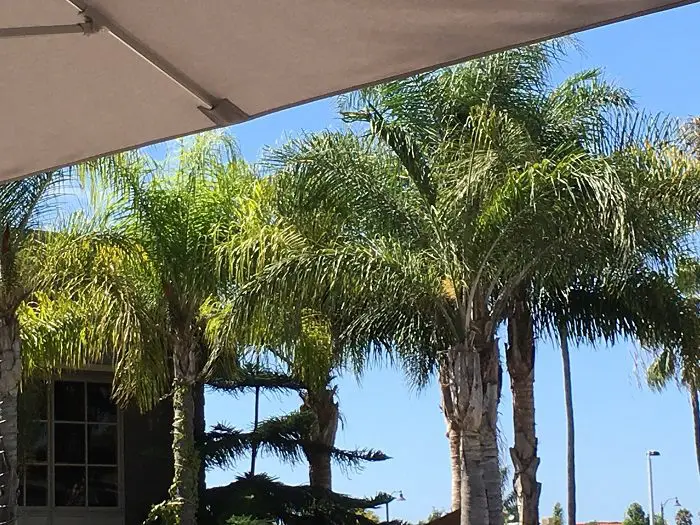
The Queen Palm — San Diego’s most elegant palm tree
Ah the Queen Palm tree. She’s just as elegant and beautiful to behold as her name. This is my personal favorite, and I have two in my yard that bring me joy on any breezy day.
The Queen Palm is the second most popular palm tree in San Diego. While the Mexican Fan Palm rules the “wild areas” of San Diego, the Queen Palm rules the neighborhoods.
You’ll notice a big difference in the Queen Palm tree as the branches droop and the fronds are more light and feathery. It could be called the weeping willow of the palm tree world, if you ask me.
The most wonderful thing about the Queen Palm is the magnificent swaying sound they make when the wind kicks up.
These lovely trees are moderate growers, so you may wait a while to have a 20 foot tree, but the full height can reach 25 feet tall.
This shorter than average height (at least of the palm trees we’ve covered so far), make them a perfect choice for gracing your yard or garden.
Queen Palm Tree Care
- Queen Palms are heat and drought tolerant but do best with deep watering once a week.
- They prefer well-drained soil and can be prone to root rot if planted too close to frequently-watered grass.
- You’ll want to supplement watering with feeding a good quality magnesium and potassium fertilizer.
- They are self shedding, but it may be necessary to use a long-handled saw to help them out a bit if a shedding frond has been hanging for weeks.
San Diego Palm Tree Must-Mention: The Cute Pygmy Date Palm
For the perfect eye-level tropical accent, look no further than the Pygmy Date Palm. What could be cuter than a miniature-sized palm tree?
Often planted in pairs or with conjoined trunks, the Pygmy Date Palm is the palm tree in San Diego that’s used most often in private residences and is absolutely easy to take care of.
These little palms are generally found in garden centers around San Diego at an average potted height of two feet or so. However, this can give the wrong impression that the Pygmy Date Palm tree stays tiny.
The truth is, the Pygmy Palm has a full-grown height of 6-10 feet. But homeowners aren’t likely to see those full heights for many years. In fact an owner may be doubtful of any growth at all at the 2-year mark. They are definitely slow growers.
So, if you’re looking for a petite palm tree that fits perfectly into that bare corner of your front walkway or yard — as long as there’s room for eventual growth up to 9 feet or so — you can enjoy the cheerful little Pygmy Palm Tree for years to come.
Pygmy Date Palm Care
- Unlike other palm trees, the Pygmy Palm tree can tolerate full sun to full shade.
- They are drought tolerant but appreciate weekly watering or at very least bi-weekly.
- Fertilizing occasionally with a magnesium and potassium blend will keep this little tree happy.
- It’s a very easy keeper. Any dead fronds that need pruning are simple to reach.
Palm Trees in San Diego conclusion.
San Diego is a palm tree’s dream (mine too!). They couldn’t ask for a better climate or location to thrive. We are so lucky to have these towering giants lining our streets, beaches, and work places.
If you’re a property owner who’s in the market for just the right palm tree, or you’re an admirer who wanted to know more — I hope this glimpse into the seven most popular palm trees in San Diego has given you some food for thought.
